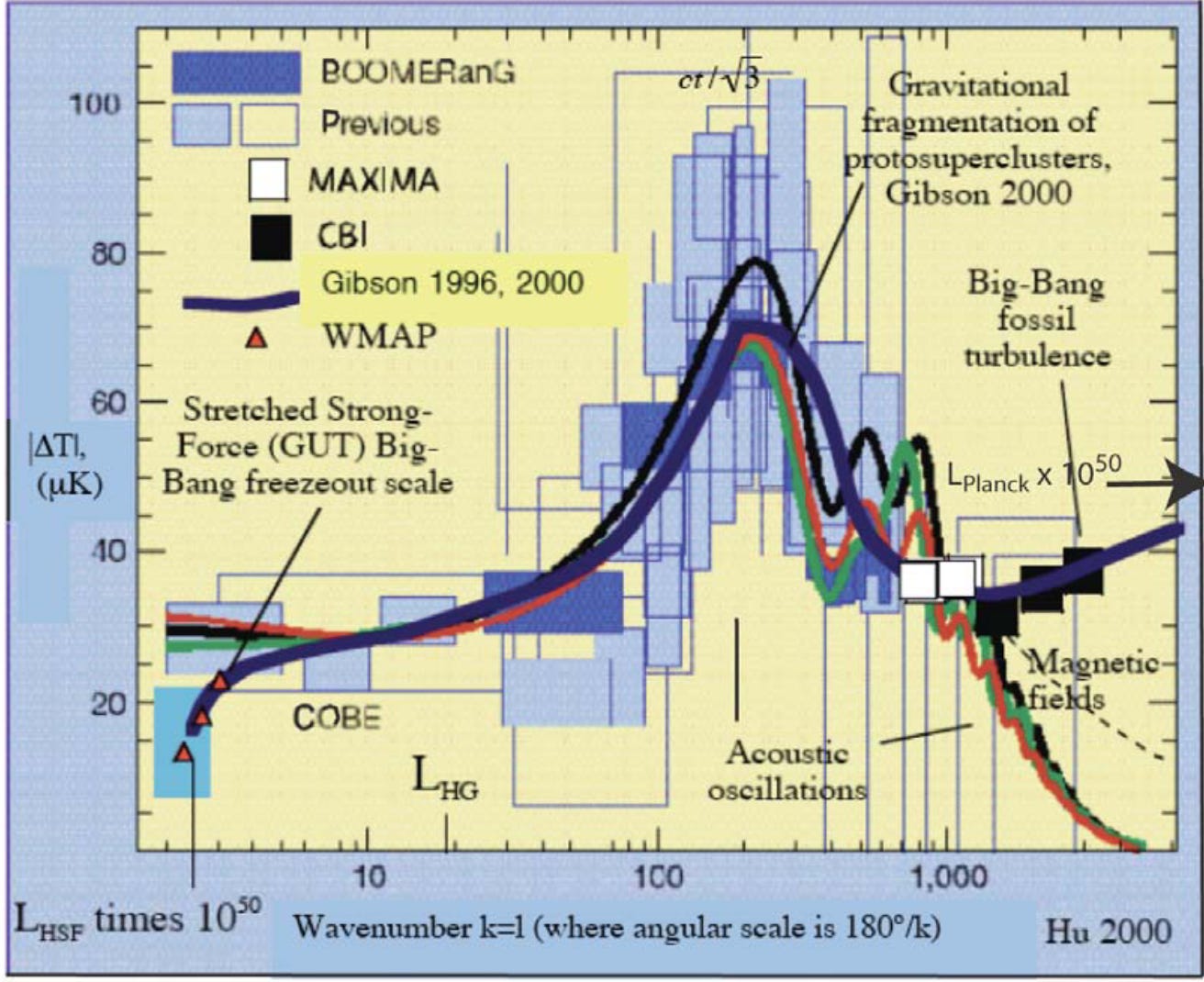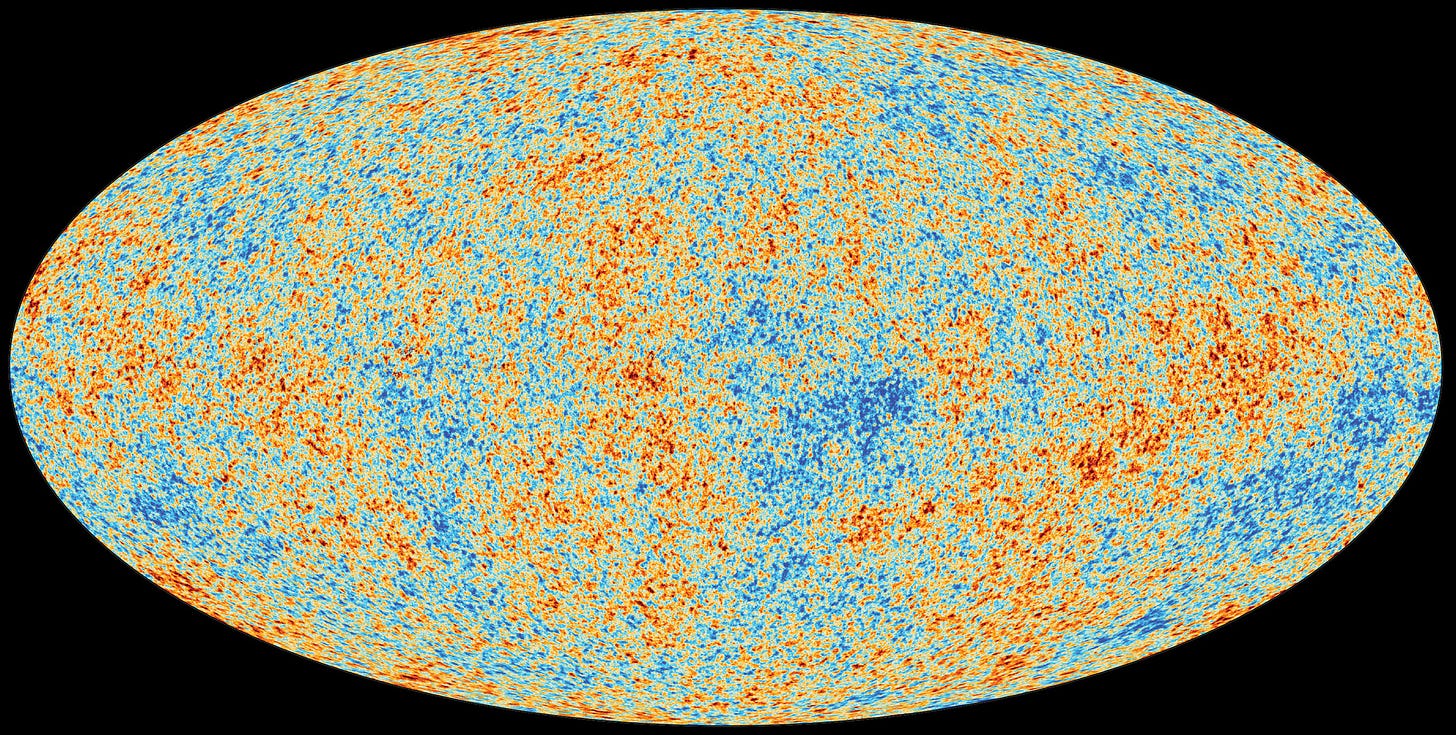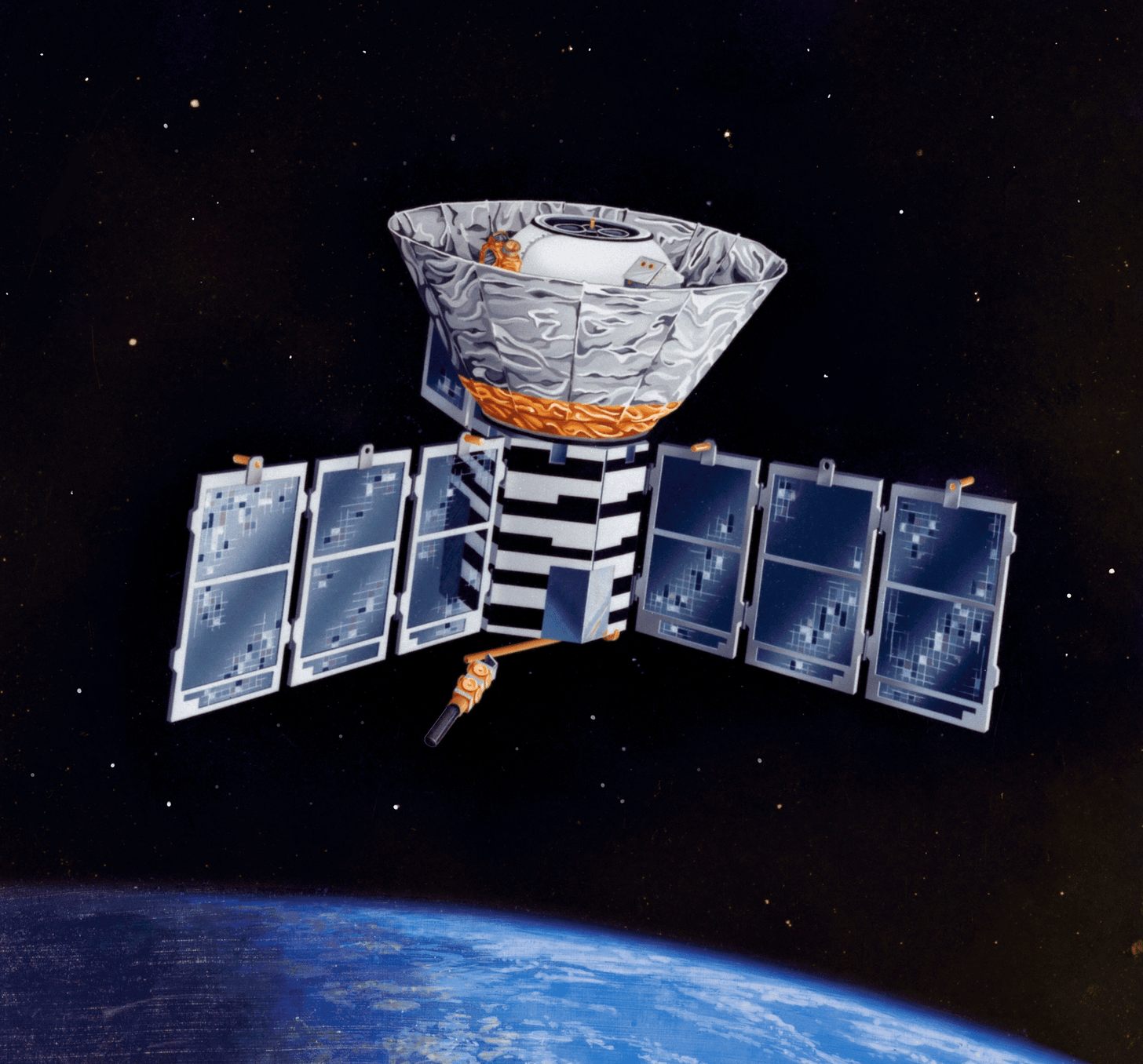An Accidental Discovery
In 1965, two radio engineers, Arno Penzias and Robert Wilson, were working with a massive horn-shaped antenna at Bell Labs in New Jersey. Their goal wasn’t to study the cosmos, but instead to improve satellite communication. However, no matter what they did, they continued to detect a faint background signal, a persistent “noise” that would not go away. They pointed the antenna in different directions, checked their instruments, and even cleared out pigeon droppings that had collected inside. Still, the signal remained. The interesting part was that no matter where they looked, it was always the same.
What they had stumbled upon was not an error, but a faint glow left over from the birth of the universe itself. At the same time, a team of physicists at Princeton University was preparing to search for just such a signal, which Big Bang theory predicted should exist. When they heard about Penzias and Wilson’s strange discovery, they pieced it together. The noise was the cosmic microwave background (CMB). It was the first direct evidence that the universe began in a hot, dense state.
How the Cosmic Microwave Background Was Born
In the beginning, the universe was a hot soup of particles and radiation. Temperatures were so high that photons, the particles of light, could not travel freely as they constantly bounced off electrons and protons in a dense plasma. This is because the energy density prevented the formation of atoms. Space was opaque, like a glowing fog.
About 380,000 years after the Big Bang, the universe had expanded and cooled enough for protons and electrons to combine into neutral hydrogen atoms. This event is called recombination. With fewer free electrons around, photons no longer scattered constantly; instead, they streamed freely across the universe. That freed light is what we now detect as the cosmic microwave background. Over billions of years, cosmic expansion has stretched those photons into the microwave part of the spectrum, via a process known as redshift, cooling them to just 2.7 degrees above absolute zero.
Measuring the Faint Glow
Initially, the CMB seemed smooth and uniform. However, later missions, COBE in 1992, WMAP in the 2000s, and most recently the Planck satellite, revealed it in exquisite detail. They showed that the CMB isn’t perfectly uniform at all. It has tiny fluctuations in temperature, differences of only a few millionths of a degree. These small ripples carry enormous meaning as they represent the first imprints of cosmic structure. Slightly denser regions eventually evolved into the galaxies, clusters, and cosmic web we observe today.
These maps of the sky are the earliest portraits of our universe. When you look at an image of the CMB, you’re looking at light that has traveled for 13.8 billion years to reach us, carrying with it information about the infant cosmos, which can also tell us about the grand scale today.
What the CMB Tells Us
The CMB is not just beautiful, it’s a scientific goldmine. From its patterns, scientists have measured the age of the universe with remarkable precision. They’ve determined the balance between normal matter, dark matter, and dark energy. They’ve confirmed that the geometry of the universe is flat on large scales, meaning its total energy density is incredibly close to the critical value predicted by cosmology.
The CMB also gives us hints about physics at energies far beyond what we can reach on Earth. Its pattern of fluctuations supports the idea of cosmic inflation, a brief period of exponential expansion in the very first fraction of a second after the Big Bang. Without inflation, the universe would not be as uniform and flat as it appears. The CMB is the most substantial evidence we have that this mind-bending event occurred

Future Prospects
Although the CMB has already provided us with a wealth of knowledge, it is far from being finished as a tool for discovery. Scientists are now pushing to measure it with even greater precision. The tiny fluctuations in the CMB contain hidden information about gravitational waves from the earliest moments of the universe, ripples in spacetime that inflation theory predicts will exist. Detecting those signatures would provide direct evidence for inflation and give us a glimpse into physics at energies far beyond what any particle accelerator could reach.
Future experiments also aim to uncover details about neutrinos. These nearly massless particles flooded the early universe, and to test whether dark energy or modifications to gravity left subtle imprints on the CMB. Ground-based observatories, such as the Atacama Cosmology Telescope and the upcoming Simons Observatory, as well as proposed satellite missions, will continue to sharpen our view of this ancient light.
The CMB has been with us for nearly 14 billion years, but in many ways we’ve only just begun to decode its message. Each new measurement adds another layer to our understanding of the universe’s origins and its composition. The oldest picture of the cosmos still holds many secrets yet to be revealed.




